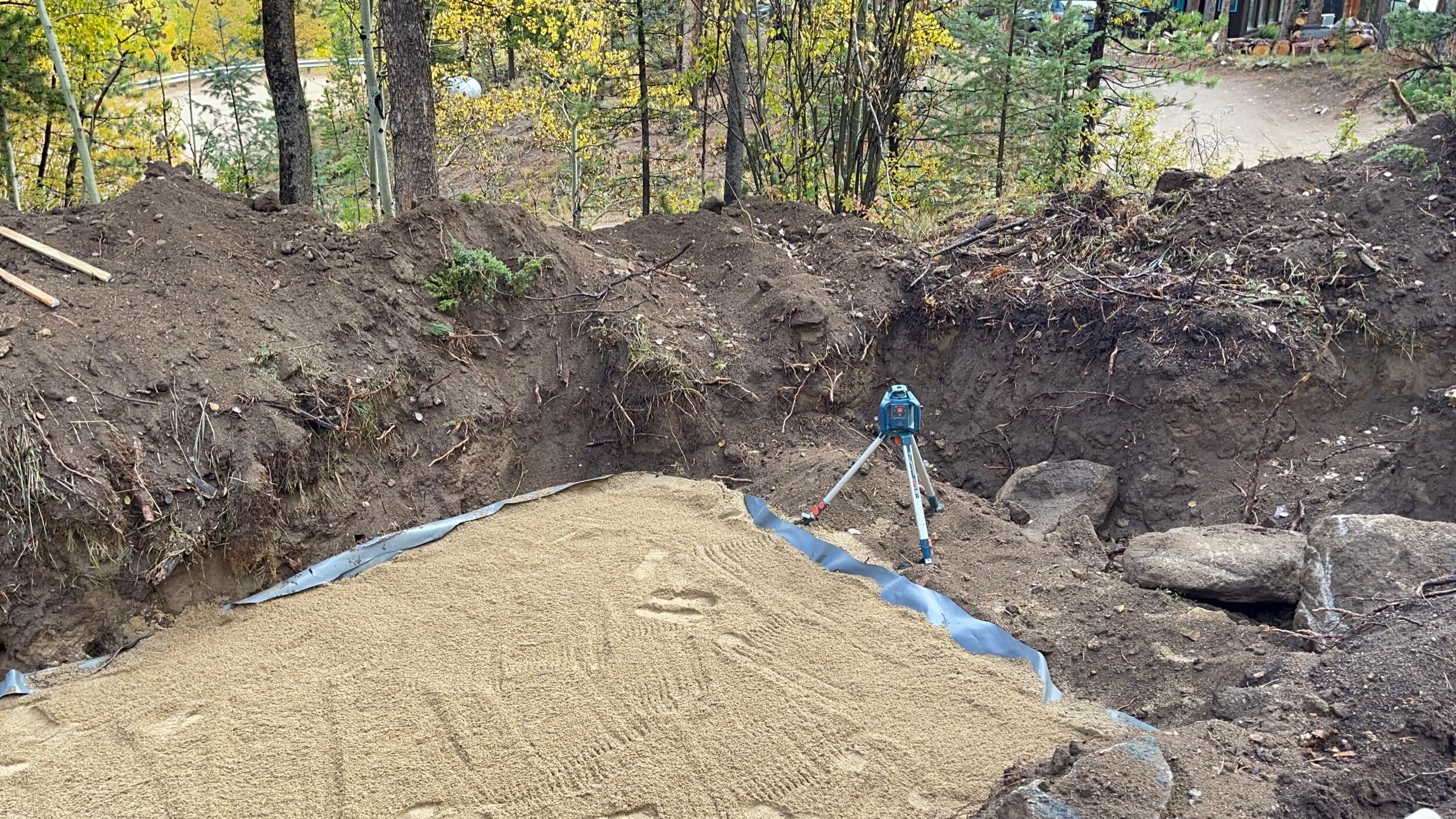• 0:01 - 0:02
I'm the new guy,.
• 0:03 - 0:24
Guest guest strike mission from Meyer services. I'm going to shoot some footage Looking good, man. This is a good light too, for you. It looks good. Bill,.
• 0:26 - 0:28
Are you going to take this machine?
• 0:00 - 0:00
• 0:34 - 1:08
So this is, this is a big giant human kitty litter box. And what we, how we do this is we find our two level points of the downslope edge. We shoot that with a laser before we get started. And then we cause that's a contour line. That's a, it's a level line essentially, uh, would come up a little bit over here. We're probably about eight inches higher, maybe 12 inches higher over here, but you kinda, you kind of compromising the split difference between which trees you gotta take out and kind of where it fits and where the rock is. So we had to actually scoot the field 10 feet this way.
• 1:09 - 1:18
And the reason why we have that poly liner, we had to scoot the field 10 feet this way because we hit rock and we couldn't even break it. We were having a hard time breaking it with our hammer.
• 1:18 - 1:51
Um, that's not the rock. The rock came out obviously, but then we're within 25 feet of the road cut. And so we had to, we had to put in the poly liner in order to, um, encroach on that offset. And we failed our first open home inspection and had to pay Boulder county $250. We'd come and reinspect. Yeah. So then that's three feet of sand. After we dig it out, we bring in three feet of sand and that sand is because that's the stuff that's been scientifically proven to, um, continue to absorb effluent for years and years to come.
• 0:00 - 0:00
• 0:00 - 0:00
• 2:01 - 2:36
What do you think about that idea? Also the job. So, and then this is how it does things that bin works. And basically you have your standard septic tank, which is an existing septic tank. We didn't have to replace it. And uh, so we just added a dosing siphon for this new field that we're putting in. So we took the existing tank cause that tanks in good condition and, and you can do this even on an existing field as well. You can retrofit a dosing siphon and just put it in the line and that will actually extend and recover the life of the field. Uh, no, cause usually those, the old fields are four-inch lines out here.
• 2:36 - 2:40
So it don't matter. I mean, you can actually, you just want it,.
• 2:42 - 2:47
But I've transitioned on there with reduce her to four-inch. So go forward to.
• 2:48 - 3:23
Sure. I think he might be able to get sick. I don't know if you can get Sam to build them. Yeah. Well, but those you have to do a reducer. Yeah. Sam told me that you can't actually from plastic sink down in commerce city. Um, you can't actually, you can't actually go through there with the forums. You, Sam says he can't, you got to step it up. Yeah. You gotta step it up. And then the other thing is, you know, the counties, don't always like you to, uh, use these dosing siphons and they want to make sure that you have plenty of fall from your, uh, from your dosing siphon.
• 3:23 - 3:39
So that, that pipes coming out of the bottom of the tank. So you're losing them not to fall there, but you want to have basically six feet of head pressure, six feet of head pressure to in your, in your drops. Now the guy who makes these, he says you don't need any, but that's where the engineers in the county like to see that.
• 3:50 - 4:02
Yeah, Sure, sure, sure, sure. But uh, you want to have the pressure rising into the field.
• 4:08 - 4:13
These guys are using the machine to port these chambers all the way down there and then we're going to, we're going to let.
• 4:21 - 4:21
Yeah.

